While we’ve been steadily moving through harvesting our trials, I’ve been paying close attention to the night temperatures forecast for the three day stretch centered on Halloween. Fortunately, there are only a few acres left that might require any more boll opener; I cannot recall a more productive year harvested in such a short timeframe. Still, for those trying to prepare their latest planted acres for the picker, the time to make that final application of boll opener is NOW. In this article, I briefly cover rates and products I would consider for applications going out today (10/25) or tomorrow (10/26).
Recent Updates
Multiple-Herbicide Resistant Waterhemp in Tennessee
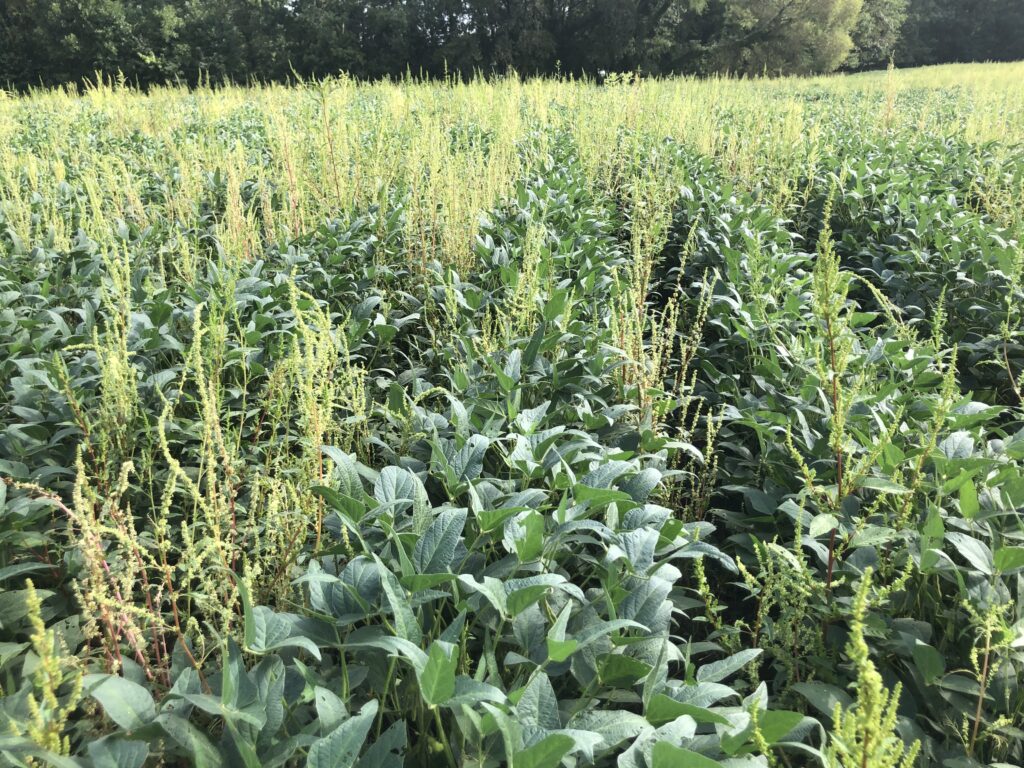
Last year we reported on waterhemp in Montgomery and Macon counties that was resistant to dicamba. We came to this conclusion from both research we conducted in the fields and the confirmation of those results by greenhouse research. The greenhouse research was conducted at Purdue University by my colleague Dr. Bill Johnson and his graduate student Claudia Bland. Continue reading
Fall Application Ryegrass Control
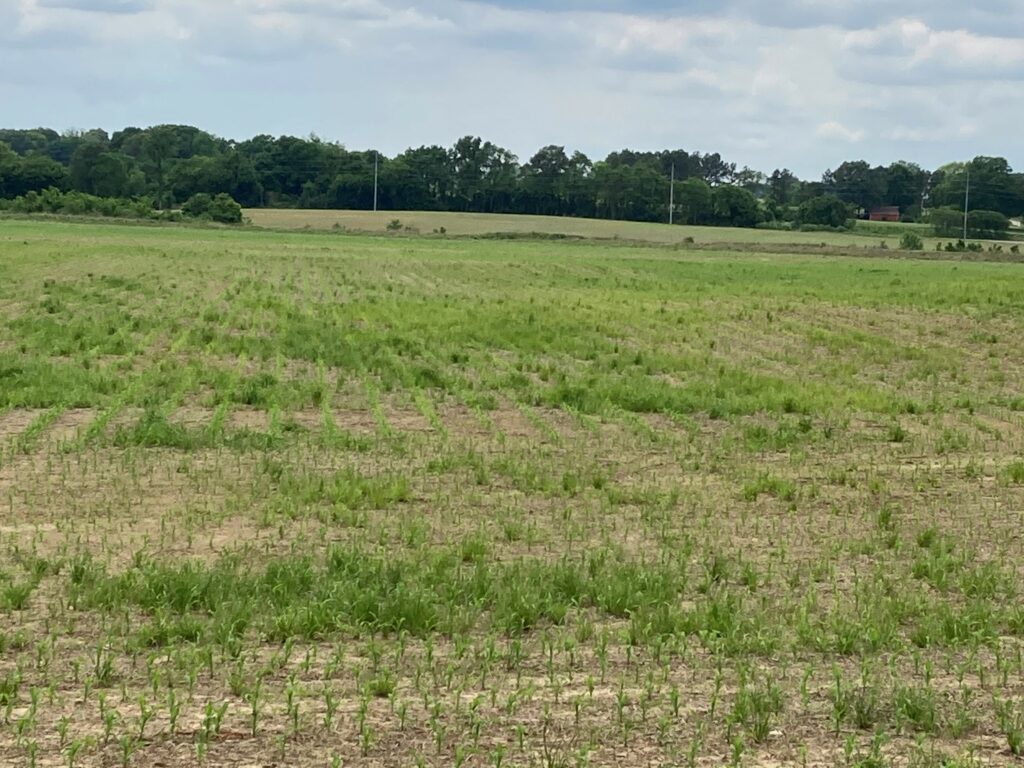
Ryegrass has become a serous weed issue in some fields that past couple of years. A major reason for this is that much of it is now glyphosate-resistant. Even if clethodim is used rather than glyphosate often it is applied on ryegrass sometime in late March through April when the grass is too well established to provide consistent control. Continue reading
EPA Herbicide Strategy Frame Work Will Impact All Pesticide Applications in Tennessee
In response to losing lawsuits on lack of action on the endangered species, the EPA proposed a draft strategy aimed at guarding federally endangered species against potential negative impacts of herbicide applications. They describe the strategy as a mix of population-level protections for over 900 listed species and designated critical habitats with a range of mitigation measures. What the EPA is proposing to do will eventually impact every pesticide application in Tennessee.
This is a very complicated topic. I found the two WarAgainstWeeds podcasts helpful in trying to understand the “why, where and how” of EPAs strategy.
If you would like to comment to EPA on this plan (I would urge you to comment!), here is a link: Write a Comment
Cover Crop Variety Selection for the South
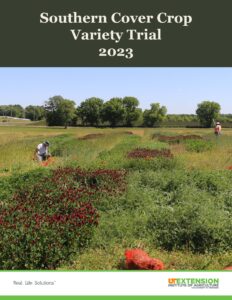 As harvest progresses for our major commodities, it is time to start planning and planting cover crops. Cover crops offer many benefits to agronomic systems, including erosion control, improvement to soil health, nutrient retention and additions, and weed suppression. How do we maximize these benefits? A key component is finding the right species, and varieties within those species. Just like corn, soybean, and cotton, that “right” variety is going to depend on your region and cropping system.
As harvest progresses for our major commodities, it is time to start planning and planting cover crops. Cover crops offer many benefits to agronomic systems, including erosion control, improvement to soil health, nutrient retention and additions, and weed suppression. How do we maximize these benefits? A key component is finding the right species, and varieties within those species. Just like corn, soybean, and cotton, that “right” variety is going to depend on your region and cropping system.
To help our growers find the best cover crop varieties for their region and system, we have been running a cover crop variety trial in Tennessee since 2019. We are excited to collaborate with the Southern Cover Crops Council this year to expand this trial and cover a 10-state region in the South. If you are in AL, AR, FL, GA, KY, NC, SC, TN, TX, or VA, we’ve got you covered! In this year’s report, you will find information important to maximizing those cover crop benefits, including cover crop biomass, canopy cover, and estimated nitrogen release, along with forage quality values for those who may be using cover crops for grazing (IVTDMD, CP, ADF, NDF, Lignin).
This past year was an odd one, with a cold snap in December that burst pipes across the South and was not so kind to some of our cover crop species. This does not reflect a typical year (at least I hope that isn’t our new normal!). For information on some of those more cold-sensitive species, looking at previous year’s reports may be helpful.
Timing defoliation and selecting products
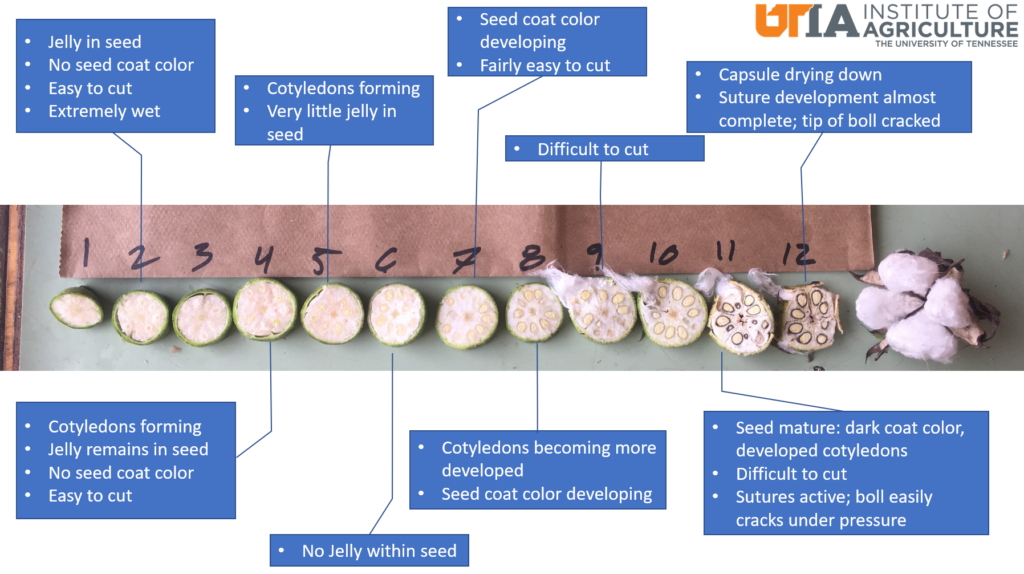 Many in West Tennessee have begun defoliating and questions on timing have been pouring in. In this blog, I rehash results from an old survey on boll maturity, give a few additional pointers on timing defoliation, and share a few thoughts on concoctions as we move towards the end of September. Continue reading
Many in West Tennessee have begun defoliating and questions on timing have been pouring in. In this blog, I rehash results from an old survey on boll maturity, give a few additional pointers on timing defoliation, and share a few thoughts on concoctions as we move towards the end of September. Continue reading
2023 MidSouth Cotton Defoliation Guide
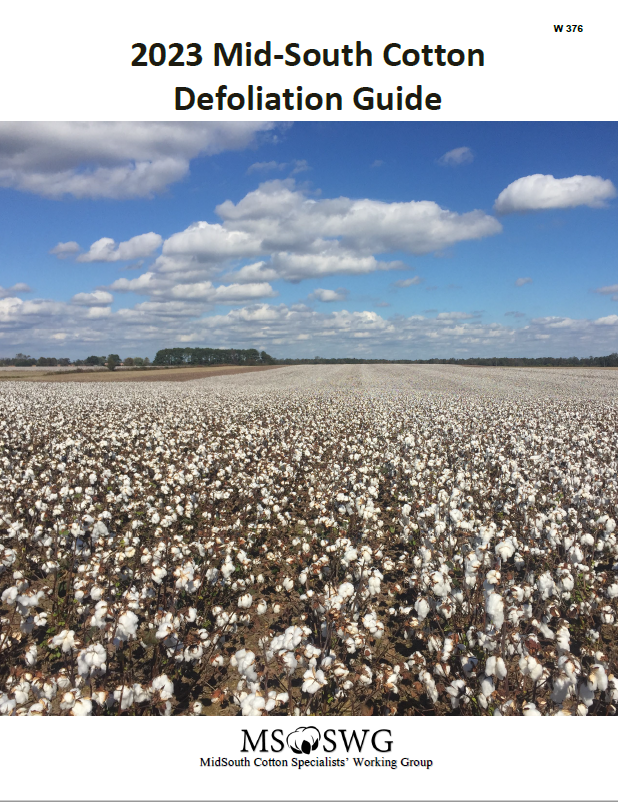 The 2023 Mid-South Cotton Defoliation Guide is now available online. You can access the guide by clicking the above image or any of the embedded links within this post. This guide was compiled and is updated yearly by Extension Cotton Specialists from throughout the Mid-South.
The 2023 Mid-South Cotton Defoliation Guide is now available online. You can access the guide by clicking the above image or any of the embedded links within this post. This guide was compiled and is updated yearly by Extension Cotton Specialists from throughout the Mid-South.
Soybean Disease Detective: Identifying Soil Borne Diseases
As most Tennessee soybeans are entering their mid-late reproduction growth stages, some symptoms of diseases caused by soil-borne pathogens may be beginning to show up in our fields, particularly sudden death syndrome this year. The issue with diagnosing diseases caused by soil-borne pathogens is that they often exhibit very similar symptomology to each other. However, there are certain indicators that can help you differentiate between these diseases and help you make the best management decisions moving forward. Continue reading

